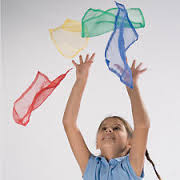Touching and Moving Learning Techniques are:
Ways tutors incorporate the dyslexic student’s strong kinesthetic (body-related) learning skills into academic work.
Background:
Many dyslexic students learn best while moving, and remember best if the material is practiced while the body is feeling weight or impact. This is hard to achieve in a classroom. Some students are so desperate for this sort of sensory input that they will pick a fight just to get hit or fall down! Others chew pencils, fiddle with toys, chew gum, or bounce in their chairs.
A smart learning coach puts this strong need for motion to work for the student. Below are a few examples, but the great tutor always looks for ways to make every lesson MOVE! When a technique helps a student, let the parent and classroom teacher know. You may improve the student’s life!
Air Writing:
Use an extended arm, stick, or sword to write letters or words in the air.
Sword Fighting:
Use padded practice swords to have a “fight” like in the movies. With each whack of the swords, call out in unison a letter of the word being spelled or the math fact being memorized. The joint impact from the swords tells the brain, “This is important, remember it.”
Writing in sand, dirt, salt, oatmeal, gelatin:
Use a finger or stick, inside or outside.
Writing on skin:
Use a non-sharp object or finger to write on the student’s hand, arm, or back.
Walking the shapes:
Outside or in a roomy area, walk the shapes of the letters or words to be learned, first with the eyes open, then with them shut. This works for telling time, too. Model this for the student before having him or her try it.
Modeling clay:
Form letters or words using Play-Doh or clay, or even mud.
Jumping rope:
Learning spelling words or math facts comes easier with the rhythm of jump ropes. The joint impact sends the information to the student’s long-term memory. Do you remember rhymes you learned as a child jumping rope? It still works!
Dancing Scarves:
Waldorf Schools employ long colorful silk scarves for numerous movement activities. There’s a good reason for this. The color wakes up the right brain, while the motion engages the kinesthetic sense. Thus, the brain becomes ready to store new information. The scarves work well for cross-body exercises and memory tasks.
Exercise weights:
For a student experiencing neurologically-based trouble focusing (ADHD or autism, perhaps) it may help to add weights to any of the above techniques. Small Exercise weights of two to five pounds, that fasten to ankles or arms, can calm and center some learners. Make a weight vest out of any vest with lots of pockets, front and back. Add sandbags or bean bags to the pockets. It’s worth a try and you’ll know right away if it helps or not. Never force a child to wear weights, because weight agitates some children and calms others.
by Yvonna Graham, M.Ed.
www.dyslexiakit.net
@GrahamYvonna
